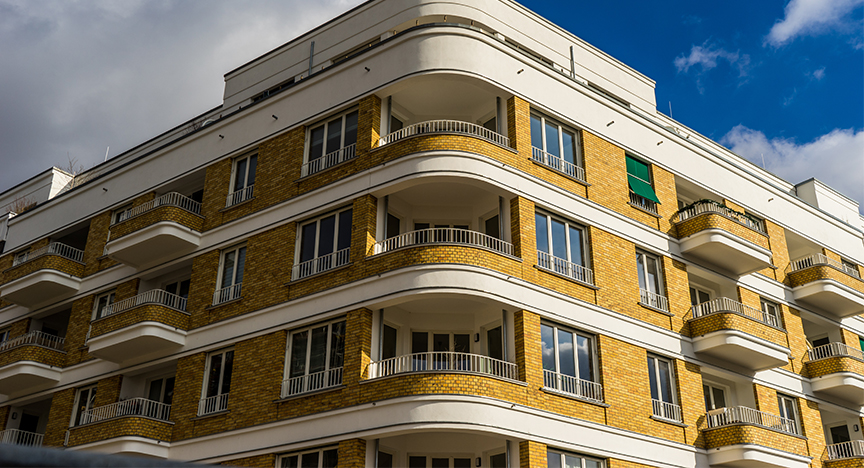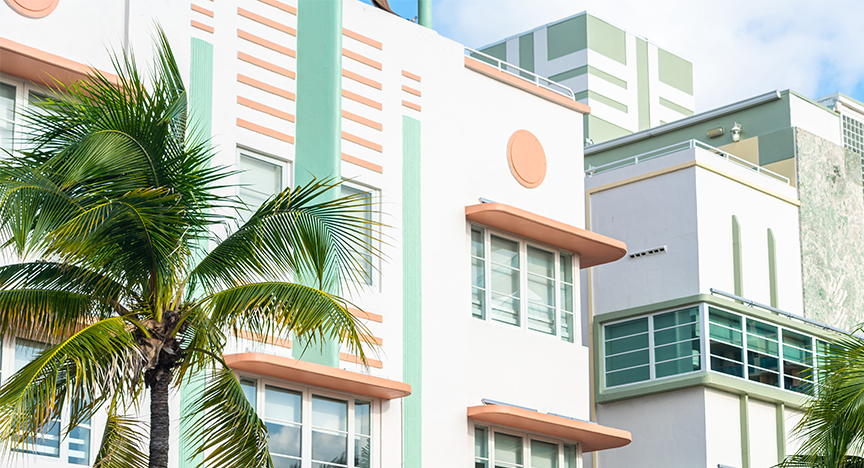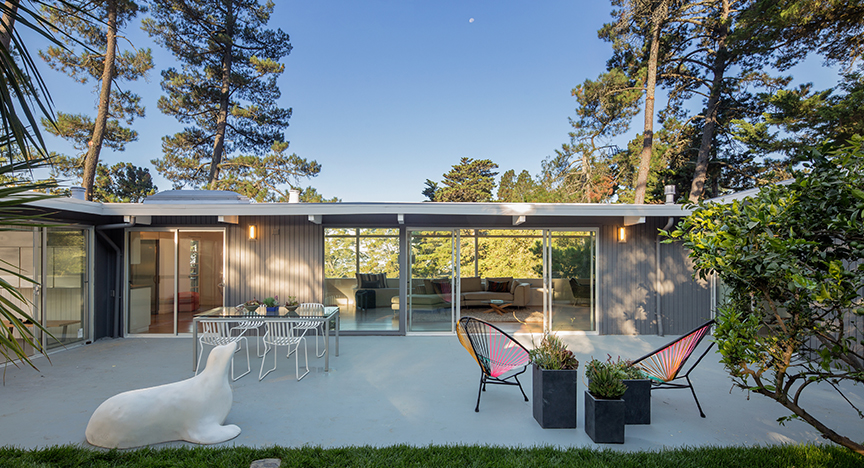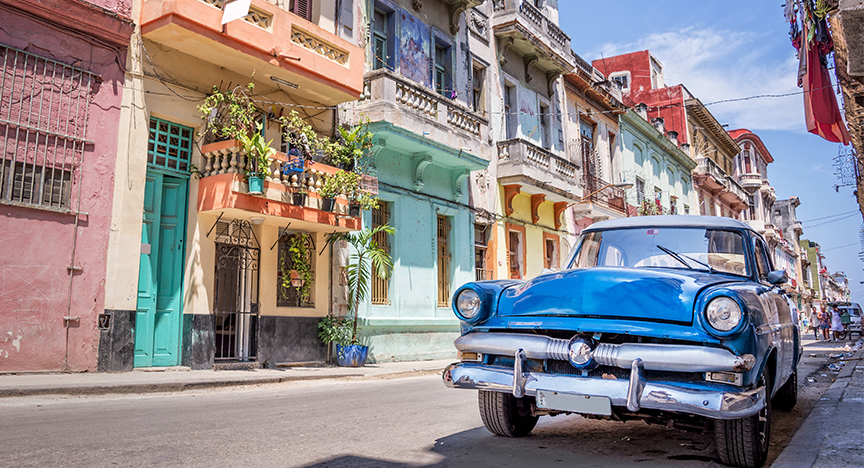This decade didn’t have the best of starts following on from the economic struggles from the Wall Street crash of 1929 and the Great Depression that was to follow. This change in mood had a knock-on effect on the interior design trends of the era. Whereas the 1920s were bold, extravagant, and vibrant, the 1930s were more subdued and understated. A style known as Streamline Moderne was created which was heavily influenced by the progression of the transportation and manufacturing industry.
Streamline Moderne utilised industrial materials such as concrete, steel and glass and emphasised clean lines. Furniture would often feature low-lying horizontal structures, with strong lines and rounded corners, much like a ship. Neutral colour palettes like creams, ivory and light pastels became more popular for home interior furnishings and wall paint.
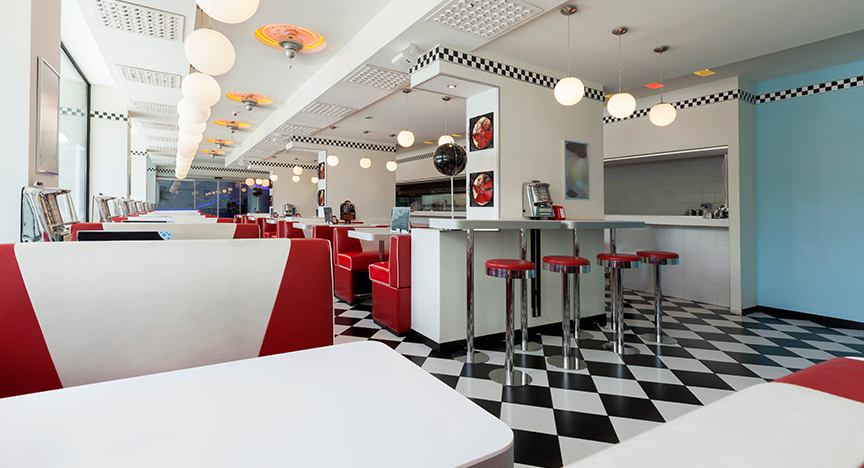
One thing that did follow on from the twenties was mirrors and metallics. Steel was still widely used in furniture but went far beyond frames for chairs and beds. Full metallic pieces such as dressers and tables were introduced into the home and the workplace.
A decade of inventions
During the thirties, there were plenty of new inventions and accomplishments to wow the public. From the first broadcasting on televisions from the BBC to some notable transportation triumphs. The Douglas Commercial 3 (DC-3), the world’s first commercial airliner took flight. The Heinkel He 176, a rocket-powered aircraft also flew for the first time and the first jet engine followed shortly behind. Adoption of cars continued to increase and in 1931 the highway code was published, insurance for motorists was made compulsory and driving tests were introduced to the British public.
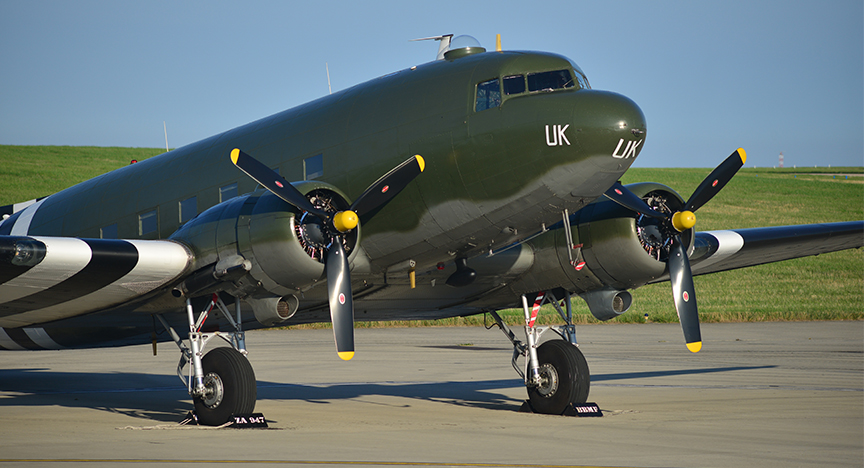
Architecture reached new heights (literally in the U.S.). The Empire State Building was completed making it the biggest skyscraper in the world at 1,250ft. This was a significant architectural accomplishment felt and seen internationally, showcasing Art Deco style in all its glory. With 10million bricks, 200,000 cubic feet of limestone, 730 tons of aluminium and 60,000 tons of manufactured steel, the materials alone to build this magnificent structure would have helped to influence the Streamline Moderne trend of the thirties. In the UK other iconic buildings were completed such as the Hoover factory in Middlesex and the Daily Express building in London.
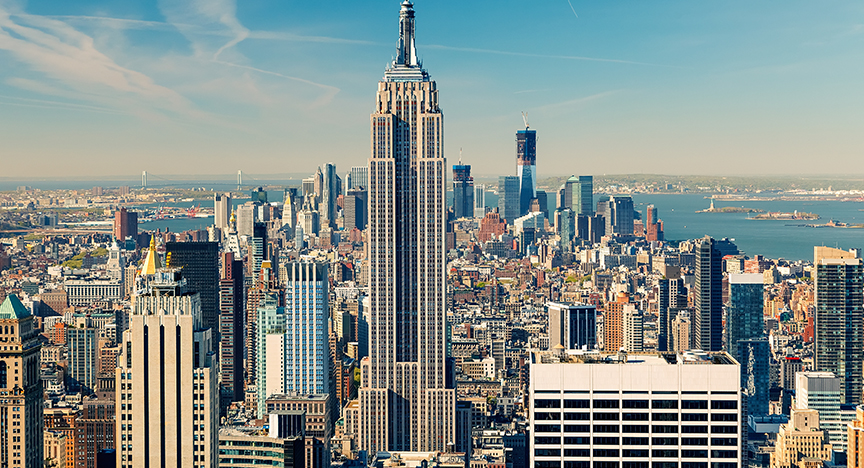
Despite the financial hit to the British economy, consumerism was still on the rise with popular house products including radios, electric razors, refrigerators, washing machines and bristle toothbrushes. Ice cream sales boomed during this period and many of the leading brand chocolate bars were also created and stocked the shelves of UK stores, such as Snickers, Mars, Cadbury’s Dairy Milk Whole Nut, Aero, Maltesers and Kit Kats. Perhaps foods like this became so popular as they offered a sweet escape from everyday hardships.
Kings, politics and war
This was an important decade for change in the UK, with a rise in fascism, multiple changes in government and to the throne.
In 1936 King George V died and was ascended by his son King Edward VIII. Prior to this, Edward had fallen in love with American divorcee Wallis Simpson, who was not very popular with his parents or the British government. As the Monarch is the head of the Church of England, it was not constitutionally permitted for King Edward to marry a woman who was divorced with a still alive ex-husband. Faced with this decision, King Edward abdicated the throne, and his brother George VI became King.
After King George VI’s coronation, the conservative leader Stanley Baldwin resigned. He was replaced by Neville Chamberlain as Prime Minister who had a rough path ahead of him. Adolf Hitler had begun to invade more territories, so Chamberlain’s government sought a policy of appeasement to try and keep Britain from approaching another war. This appeasement was futile and in 1939 Germany invaded Poland, so the United Kingdom declared war against Germany.
A style to signify hope
With so much political change and economic depression, perhaps industrial advancements and inventions were signs of optimism for this era and therefore championed in homes. It celebrates the new manufacturing processes and materials that went on to propel the transportation industry. Streamline Moderne is still a popular interior design style today, especially in business settings such as offices and hotels.

